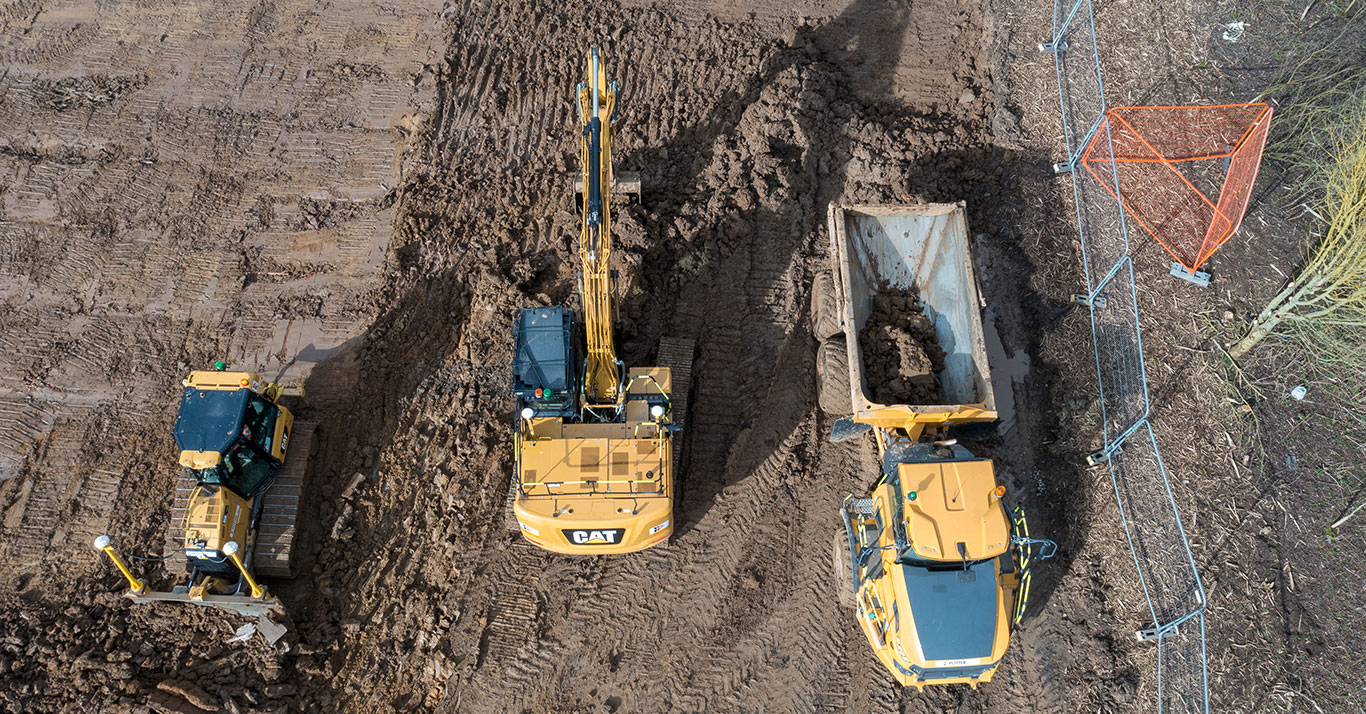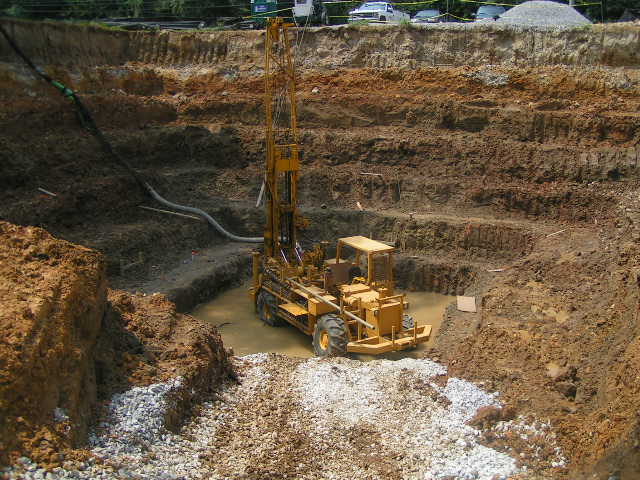The Value of Geotechnical Engineering in Dealing With Environmental Obstacles and Enhancing Building And Construction Safety And Security
Geotechnical design works as a keystone in the junction of ecological stewardship and building safety, offering essential insights right into the actions of dirt and rock under different conditions. This discipline not just addresses pushing environmental obstacles such as dirt disintegration and groundwater protection but additionally boosts the toughness of facilities against all-natural dangers. By carrying out calculated site examinations and customized mitigation actions, geotechnical designers play an important role in guarding both human lives and environmental integrity. The intricacies of these difficulties raise crucial questions concerning the future direction of this area and its ramifications for lasting advancement.

Role of Geotechnical Design
Geotechnical design plays a crucial role in the style and building and construction of infrastructure by dealing with the behavior of dirt and rock materials under various conditions. This area of design is essential for recognizing the interaction between structures and the ground, which consists of determining the load-bearing ability of dirt, evaluating stability, and predicting possible settlement or failing.
Geotechnical designers are in charge of carrying out website investigations, which entail sampling and screening dirt and rock to gather data on their physical and chemical residential properties. This info is essential for designing foundations, preserving walls, and other earth-retaining structures that make sure security and durability. Moreover, geotechnical design notifies the choice of ideal construction approaches and products, therefore decreasing risks related to dirt habits.
In addition, the integration of geotechnical design principles right into metropolitan preparation and ecological monitoring is crucial for attending to challenges such as ground contamination and groundwater administration. By recognizing geotechnical factors, designers can develop sustainable solutions that enhance the durability of infrastructure versus natural threats, while likewise advertising environmental stewardship. Eventually, the duty of geotechnical engineering is important for achieving secure, resilient, and environmentally mindful construction practices.
Dirt Disintegration Mitigation
Dirt disintegration positions a substantial threat to both ecological stability and facilities stability, influencing around 24 billion loads of fertile dirt shed every year worldwide. This phenomenon is intensified by variables such as deforestation, urbanization, and bad farming techniques. Geotechnical engineering plays a critical duty in creating effective dirt erosion reduction approaches that secure both the environment and building and construction projects.
One method requires the application of erosion control approaches such as plants planting, which stabilizes soil with origin systems. Furthermore, the construction of preserving balconies and wall surfaces can effectively decrease surface area overflow and protect at risk locations from disintegration. Proper drain design is additionally critical; it reduces water accumulation and guides excess overflow far from essential structures.
In addition, geotechnical engineers employ dirt stabilization strategies, such as the application of geotextiles and biodegradable mats, to enhance dirt communication and avoid degradation - about geotechnical engineering. Regular monitoring and evaluation of erosion-prone sites allow timely treatments, guaranteeing long-term sustainability. By incorporating these methods, geotechnical design not only reduces the influences of dirt erosion however likewise adds to the strength of framework against environmental challenges, ultimately cultivating a more secure and much more lasting constructed setting
Groundwater Protection Techniques
Groundwater serves as a vital source for alcohol consumption water, agriculture, and industrial procedures, making its protection essential for environmental sustainability and public wellness. Efficient groundwater protection methods are crucial in address reducing contamination risks and guaranteeing the long life of this source.

Normal monitoring of groundwater high quality is also essential, making it possible for very early detection of contamination resources and facilitating timely removal efforts. Utilizing advanced modern technologies, such as geophysical surveys and remote sensing, help in determining possible risks to groundwater books.
Furthermore, public education and learning and stakeholder engagement are important, promoting area support for groundwater security efforts. geotechnical specialist. By integrating regulatory steps, technological improvements, and neighborhood involvement, we can create a detailed framework that safeguards groundwater resources while advertising sustainable development and building practices
Landslide Risk Management
Landslides pose significant hazards find here to both human safety and facilities, making effective threat management techniques necessary. Geotechnical design plays a vital role in identifying, evaluating, and mitigating landslide dangers. A comprehensive understanding of incline security, dirt auto mechanics, and hydrology is essential for establishing effective danger administration plans.
The very first action in landslide threat management entails detailed website investigations, which consist of geological mapping and dirt screening. These examinations assist designers review the possibility for landslides by determining important factors such as slope angles, dirt structure, and water web content. Making use of advanced technologies such as remote picking up and geophysical surveys can boost the accuracy of these assessments.
As soon as dangers are identified, suitable mitigation actions can be executed. These may include design solutions such as retaining wall surfaces, drain systems, and incline stablizing techniques. Keeping an eye on systems ought to be established to identify signs of ground movement and modifications in water levels, allowing for proactive interventions.

Enhancing Construction Safety
Building and construction sites typically offer a myriad of hazards that can jeopardize worker safety and job stability. Geotechnical engineering plays a crucial function in enhancing building safety and security by supplying crucial understandings right into subsurface problems. Through extensive soil and rock evaluation, geotechnical engineers can identify prospective threats, such as soil instability, groundwater problems, and seismic susceptabilities, which might compromise the security of building activities.
Applying geotechnical remedies, such as proper foundation style and the use of retaining frameworks, reduces these dangers significantly. These options not only make sure the security of the structures being built yet also develop a safer working atmosphere for building employees.
In addition, fostering a culture of security through training and adherence to established security procedures additionally boosts construction website safety and security. By integrating geotechnical expertise right into the preparation and execution phases, building tasks this content can attain greater safety and security criteria, ultimately safeguarding workers and ensuring effective job conclusion.
Conclusion
In verdict, geotechnical engineering offers as an important technique in dealing with ecological difficulties and advertising building and construction safety. Via effective dirt erosion reduction, groundwater protection methods, and landslide risk administration, geotechnical engineers add to the development of resistant facilities.
Geotechnical design serves as a keystone in the crossway of ecological stewardship and building safety and security, offering crucial understandings right into the habits of dirt and rock under various problems. Geotechnical engineering notifies the selection of ideal building approaches and materials, therefore lessening risks linked with dirt behavior.
Geotechnical design plays a critical role in developing efficient soil erosion reduction methods that protect both the setting and construction tasks.
Furthermore, geotechnical designers employ dirt stabilization methods, such as the application of geotextiles and biodegradable floor coverings, to enhance dirt communication and stop degradation. With thorough dirt and rock evaluation, geotechnical engineers can recognize possible threats, such as soil instability, groundwater issues, and seismic vulnerabilities, which might endanger the safety of building tasks.